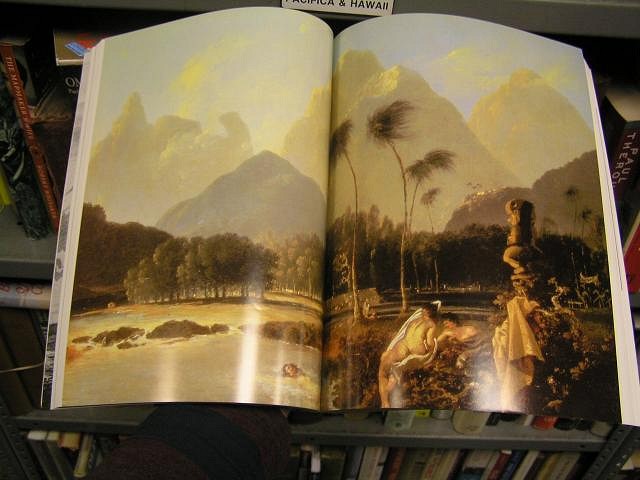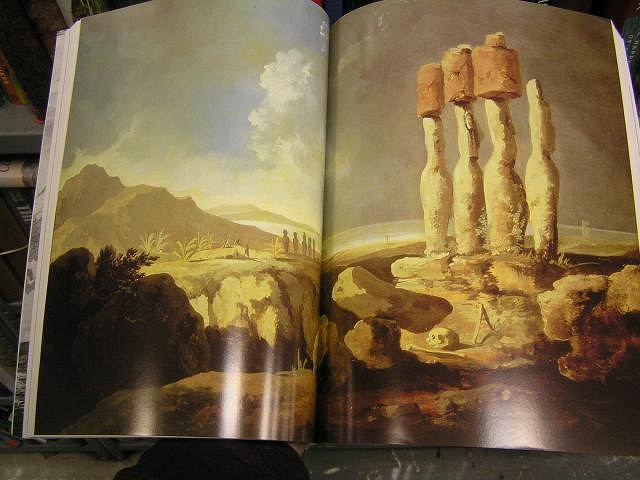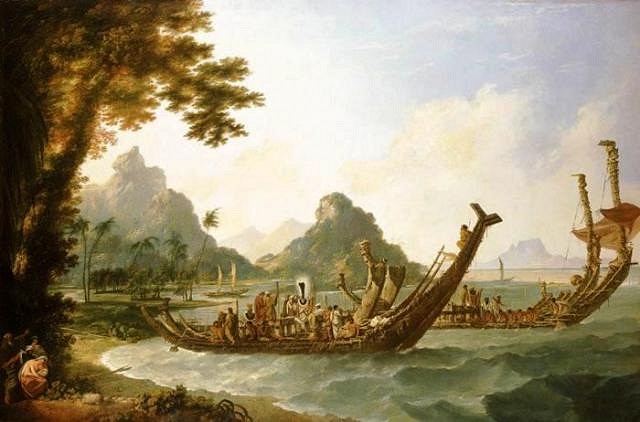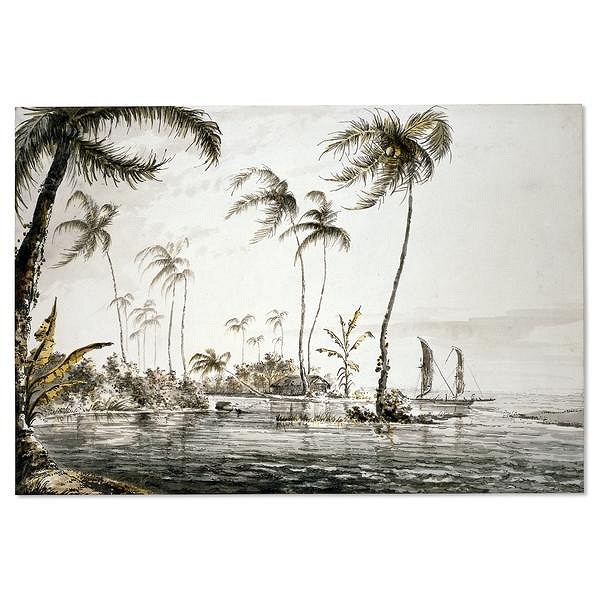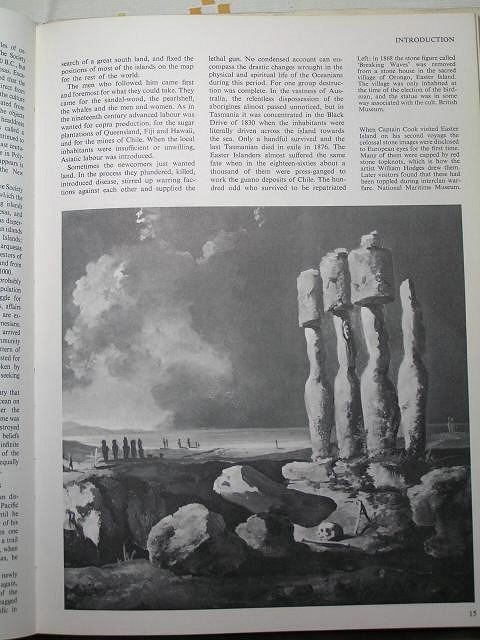Tiki Central / General Tiki
William Hodges art
Pages: 1 9 replies
|
M
martian-tiki
Posted
posted
on
Fri, Feb 12, 2010 4:15 PM
I recently got a book on the history of Tahiti and the cover art was the painting "Tahiti Revisited" by William Hodges. http://www.aucklandartgallery.govt.nz/press/hodges.asp In particular tiki statues are in "Tahiti Revisited" painted in 1776 and "A View of the Monuments of Easter Island" painted 1775 |
|
Z
Zeta
Posted
posted
on
Wed, Mar 17, 2010 2:20 PM
This painting is currently in London. |
|
Z
Zeta
Posted
posted
on
Wed, Mar 17, 2010 2:21 PM
|
|
Z
Zeta
Posted
posted
on
Thu, Mar 25, 2010 11:34 AM
|
|
T
TikiG
Posted
posted
on
Thu, Mar 25, 2010 11:45 AM
I love his paintings - the capture of the play of light is incredible, never mind the spirit of the moment captured as well. I've painted a variant of his "A View of the Monuments of Easter Island" - I first discovered that work inside a National Geographic book on Polynesia. Good stuff. Thanks for posting! |
|
DZ
Dr. Zarkov
Posted
posted
on
Fri, Mar 26, 2010 6:17 AM
In the spirit of some on this board I hereby declare this man's art is deemed to be "Not Tiki." These works are far too tasteful. |
|
IK
Iokona Ki'i
Posted
posted
on
Fri, Mar 26, 2010 5:47 PM
View of Island of Otaheite (Tahiti), a watercolour
|
|
M
martian-tiki
Posted
posted
on
Fri, Mar 26, 2010 8:00 PM
Poor Hodges when he was alive was dismissed by art critics at the time as well. Hodges accompanied Cook to the Pacific as the expedition's artist in 1772-1775. Most of the large-scale landscape oil paintings from his Pacific travels for which Hodges is best known were also produced after his return to London; he received a salary from the Admiralty for the purposes of completing them. These paintings are especially notable as being some of the first landscapes to use light and shadow for dramatic purposes. Hodges' use of light as a compositional element in its own right was a marked departure from the classical landscape tradition. Contemporary art critics complained that his use of light and color contrasts gave his paintings a rough and unfinished appearance. In late 1794, Hodges opened an exhibition of his own works in London that included two large paintings called The Effects of Peace and The Effects of War. In late January, 1795, with Britain engaged in the War of the First Coalition against Revolutionary France and feelings running high, the exhibition was visited by Prince Frederick, Duke of York and Albany, the second son of King George III. The Duke took offense at the political nature of Hodges' paintings and ordered the exhibition closed; this Royal censure effectively ended Hodges' career as a painter. Hodges retired to Devon and became involved with a bank which failed during the banking crisis of March, 1797. On 6 March of that year, he died from what was officially recorded as "gout in the stomach", but which was also rumored to be suicide from an overdose of laudanum. |
|
Z
Zeta
Posted
posted
on
Sat, Mar 27, 2010 4:10 AM
Awesome martian-tiki! I really like your posts! keep the coming monstruo! |
|
Z
Zeta
Posted
posted
on
Mon, Jul 12, 2010 10:15 PM
|
Pages: 1 9 replies

